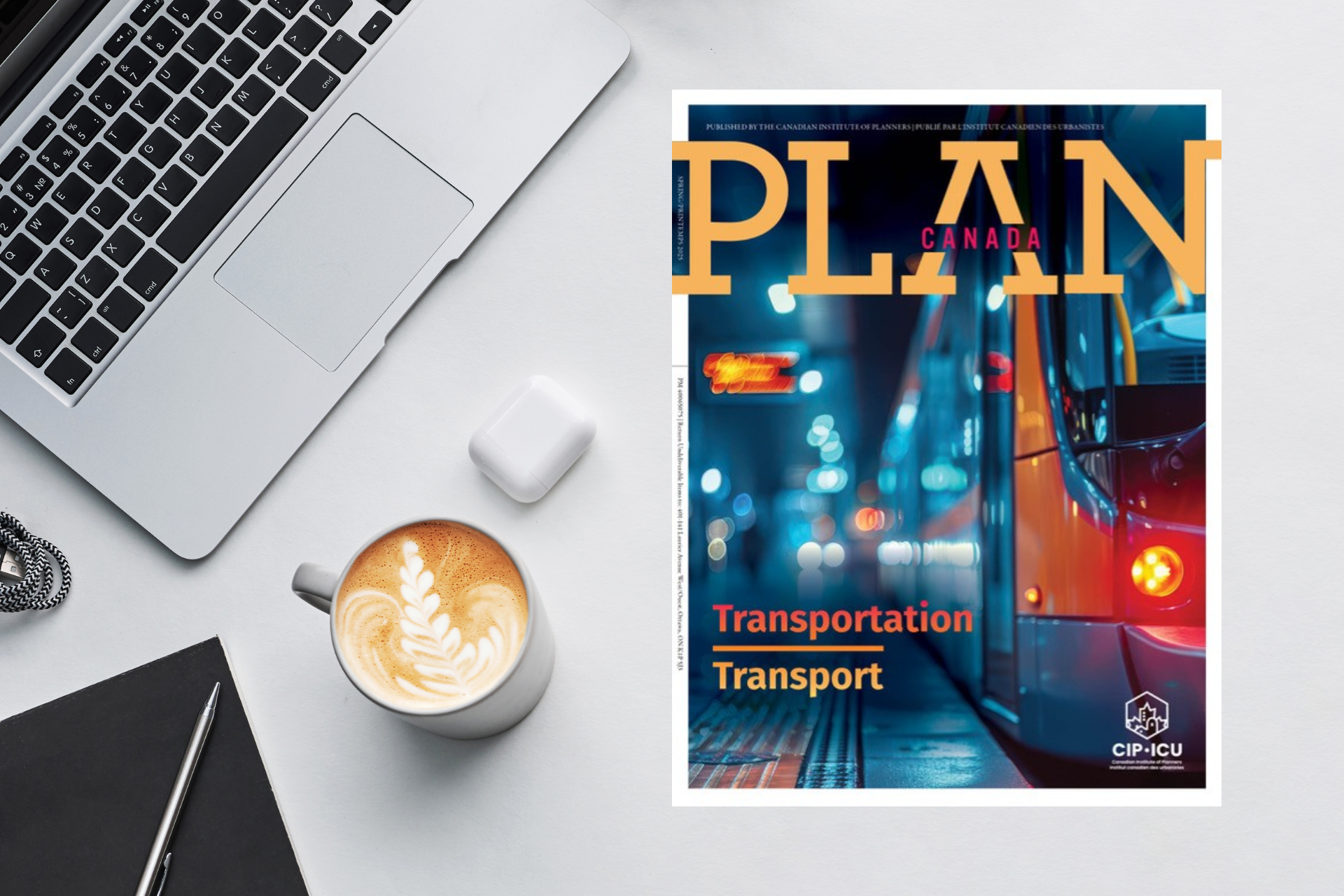Editor’s Note by Ezra Wasser RPP, MCIP
Going Places
Transportation systems are evolving with new possibilities for better journeys, but what remains constant is the principle that transportation networks should be designed to meet the present and future needs of the people that depend on them. This issue of Plan Canada contains stories about improving the many ways that people and objects move from coast-to-coast-to-coast.
Our societies try to address the practicalities of making transportation faster, safer, and more reliable. We aspire to have cleaner, more comfortable, easier to navigate, and more aesthetically pleasing transportation. We collectively design solutions and build coalitions to improve our conveyances.
Transportation issues are grounded in the shapes and densities of our land use patterns. Accordingly, it is equally important for planners to work towards designing transportation systems that enable the intended land uses as it to design land uses that function within the capacities of current and future transportation systems.
Within a single journey, multiple modes of transportation may be used. Steven Oliver advocates for designing of mobility hubs to facilitate seamless connections between modes. Among these modes, are shared micromobility services, which have begun shifting from being innovative novelties to being quotidian transportation options. Still, governments, service operators, and other stakeholders continue to learn what aspects of shared micromobility service design works well, needs refinement, or needs to be reconsidered. Ezra Lipton provides an overview of the state of bikeshares and e-scooters rental in Canada’s urban centres.
New routes for bicycles and other faster-than-walking transportation options are being constructed and used for both personal and shared devices across the country. However, Canada’s populace continues to debate how (and whether) to integrate this type of infrastructure in our communities. This issue includes stories about experiences about building support and building cycling infrastructure in Nova Scotia from Marlene Melanson and Beth Schumacher as well as from British Columbia from Tim Shah and Nathan Carswell.
Although we may have different opinions on how to achieve the goal of improving our roadways, the desire for better streets appears to be universal. On Vancouver Island, Stephen Sheppard and colleagues discuss participatory planning and fostering consensus among neighbours and local governments for how to improve transportation networks in Oak Bay. Meanwhile, Amelie Cosse and Carys Aspden highlight the Ville de Montreal’s its roads and stormwater management infrastructure more resilient through sustainable urban drainage systems. Public transit remains a focus for sustainable urban transportation. For riders, transit system design and operations, as well as the behaviour of other passengers contribute to the desirability of public transit use.
Amal Javed Abdullah relates findings from discussions with passengers in suburban Vancouver about what they’re seeking in their everyday transit-riding experience. Whereas many of this issue’s articles focus on making an impact at the local scale, planners are invited to consider the opportunities and challenges of integrating our communities across regions and around the planet.
Eric Backstrom and Peter Scholz contemplate the possibilities that could result from plans to connect Alberta’s growing cities, iconic tourist destinations, and transportation hubs with passenger rail services. Meanwhile, Natalia Lee Ho and Josh Horst discuss how to safeguard airports so that flights can connect our dynamic urban landscapes to points around the globe. Whether propelled by muscle, by current, or by engine, we have always been in motion. As we exist and as we consume, we are always affecting and affected by local and global transportation networks.
As planners, we are each on a professional journey. Our work involves designing our transportation networks and our land use patterns. Our professional journeys involve learning how to make every place and every journey better. You’re encouraged to use the insights from the articles in this issue when contemplating, planning, and facilitating the future of how we move around and between our communities.
How to Read This Issue of Plan Canada
Are you a CIP member?
Not a CIP member?
About the Editor
Ezra Wasser RPP, MCIP
Ezra is a registered professional planner and a project manager with the City of Toronto. Prior to joining the City of Toronto team, he worked as a planner with the City of Calgary. Ezra is a graduate of the University of Waterloo School of Planning, is currently pursuing a graduate diploma in public administration in the Local Government Program at Western University, and volunteers with the Toronto District of the Ontario Professional Planners Institute.
